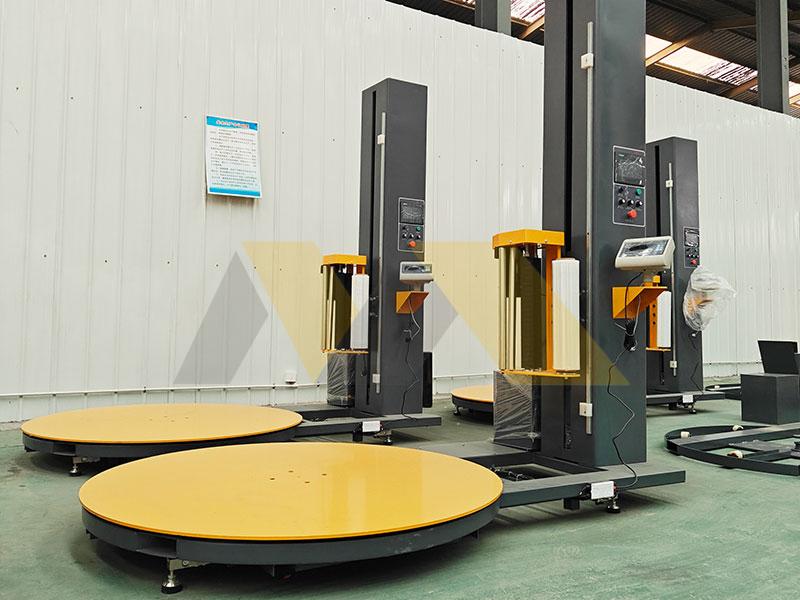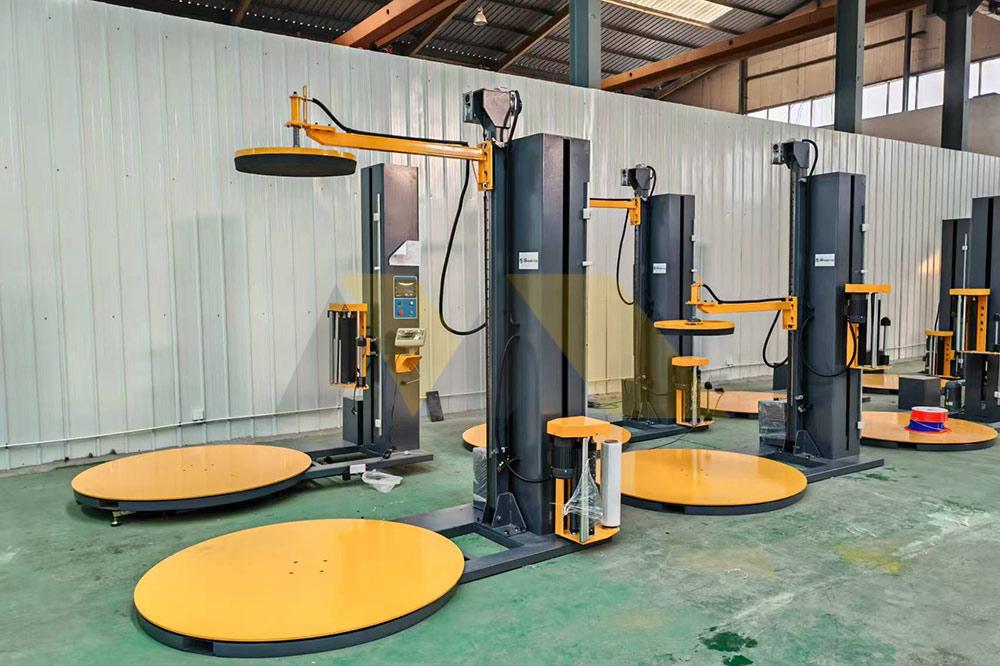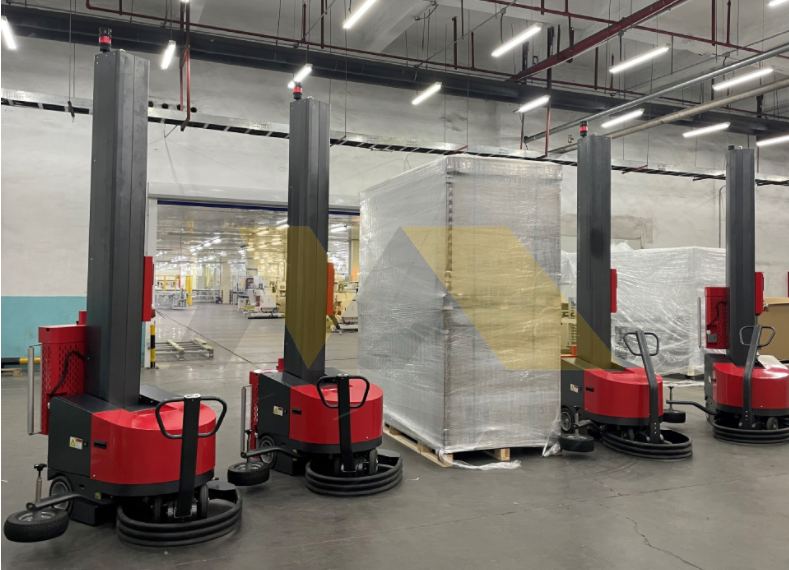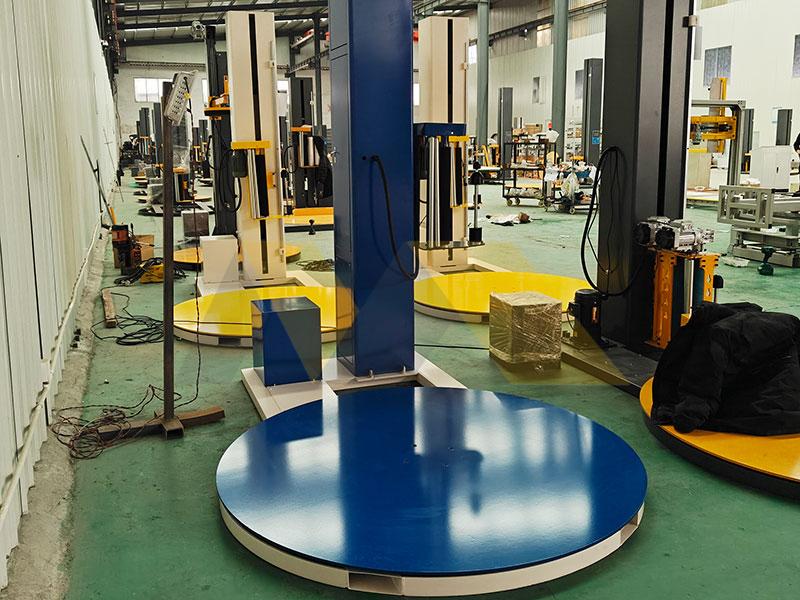Watched a warehouse dump 3 tons of film waste monthly. Environmental regulations tighten yearly. Smart wrapping tech cuts waste now. Let’s uncover modern solutions for sustainable packaging.
Next-gen wrappers reduce film usage 30-50% via pre-stretch optimization while supporting recyclable films—lowering carbon footprints and protecting profits. Strategic buyers combine automation with ESG compliance for market advantage.

These innovations reshape industrial packaging. Explore key trends below.
How much waste can machines reduce?
Saw textile exporter slash waste costs 58%: their old machine used thicker film unnecessarily. Precision cuts excess visibly. Modern controls are transformative.
Advanced controls cut film waste 40% via tension modulation and pre-stretch optimization—particularly for irregular loads. This directly reduces plastic consumption and operational costs in high-volume facilities.
Waste reduction mechanics
Performance comparison table
| Feature | Basic Wrapper | Advanced Eco-Wrapper | Waste Reduction |
|---|---|---|---|
| Pre-Stretch Rate | 150-180% | 250-300% | -18% film usage |
| Tension Sensors | Manual setting | Auto-calibrating | -15% over-wrap |
| Layer Optimization | Fixed pattern | AI-based adjustment | -10% usage |
Key waste-cutting techniques:
- Dynamic containment force – Adjusts per pallet center-of-gravity
- Film memory reduction – Special rollers prevent elastic rebound
- Edge-protection algorithms – Eliminates corner over-wrap
Our Malaysia client saved $4,800/month post-upgrade. WhatsApp for your waste audit.
What eco films work with machines?
Tested compostable film last year—horrific jams halted production. Material compatibility can’t be guessed. Verify before switching.
Standard machines handle recyclable LDPE films. For biodegradable/bioplastic options, confirm micron ratings (20-35µ ideal) and test pre-stretch tolerance above 200% at installation.
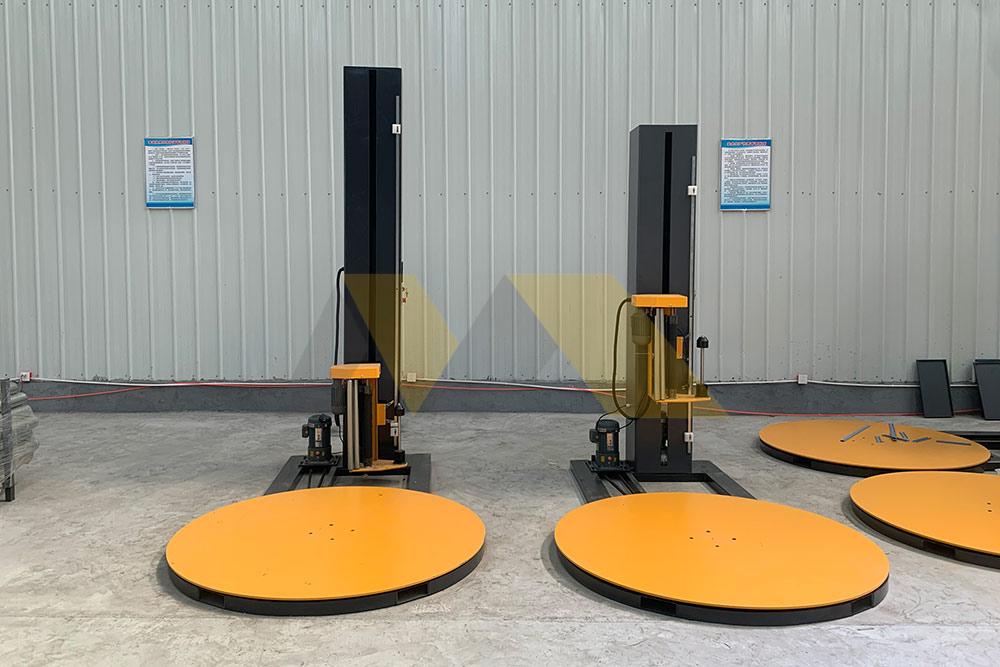
Film technology breakdown
Material compatibility matrix
| Film Type | Pre-Stretch Range | Recyclability | Suitable For |
|---|---|---|---|
| Recycled LDPE | Up to 280% | 100% recyclable | General cargo |
| PLA Bioplastic | 150-200% | Industrial composting | Light goods |
| Dual-Layer VIC | Up to 240% | Separation required | Seafood/chemicals |
Implementation strategies:
- Viscosity tests – Prevent rollers slipping with bio-resins
- Lubrication adjustments – Change roller oil for plant-based films
- Temperature corridors – Maintain optimal stretch range
We provide lab-verified film compatibility reports—request sample test.
Can energy-saving features cut costs?
Energy bills dropped 29% after retrofitting motors—even night guards noticed. Power drains hide everywhere. Small upgrades return massive savings.
Smart power systems reduce energy use 40% through servo motors/regenerative braking. Combined with auto-sleep modes, they optimize consumption during 24/7 operations.
Cost-reduction framework
Power-saving comparison
| Conventional | Energy-Smart | Daily Savings (20hr)* | |
|---|---|---|---|
| Motor Type | Induction | Servo-Electric | 47 kWh |
| Standby Draw | 15% output | <1% | 8 kWh |
| Peak Management | None | Load-sensing | Avoids tariff spikes |
*Based on average 20-pallet/hour operations
Implementation roadmap:
- Power audits – Measure baseline consumption per cycle
- Phase conversion – Retrofit motors during planned maintenance
- TPM routines – Clean heat sinks monthly
Calculate your savings potential—send electricity rates via WhatsApp.
How do certifications prove green value?
Supplier’s "eco-certified" claim was empty. We demanded audit trails. True certifications show details, not just logos. Verify everything.
Valid certifications include ISO 14067 footprints and UL ECOLOGO stamps—always cross-check registration numbers against official databases. Benchmark against GRESB standards.
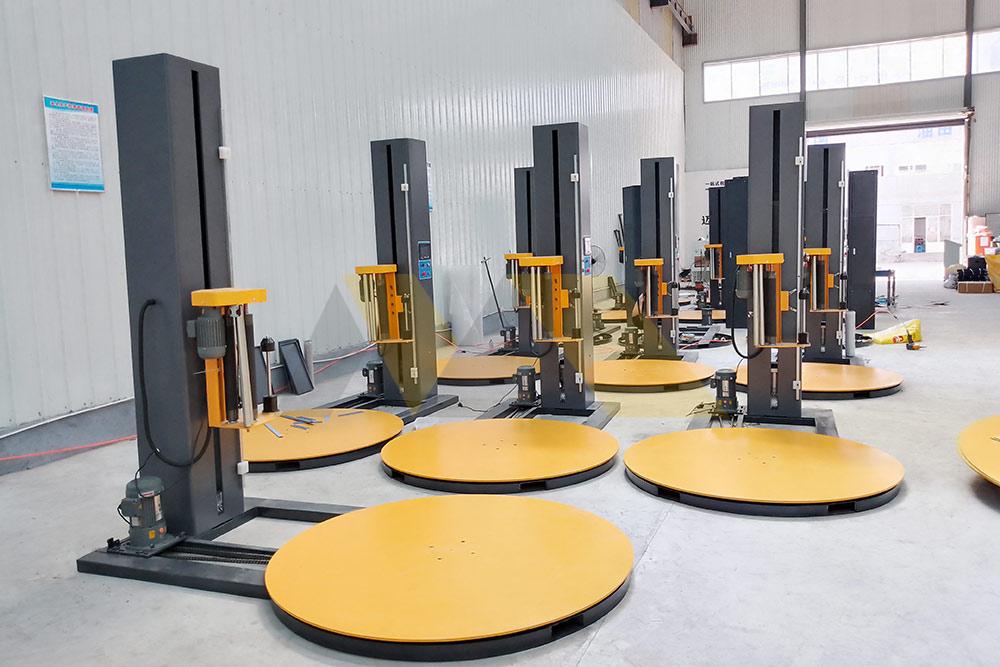
Verification protocols
Essential documentation checks
| Certificate | Valid Period | Critical Data Points | Red Flags |
|---|---|---|---|
| Carbon Disclosure | Annual renewal | Scope 1/2/3 coefficients | Generic figures |
| Material Traceability | Batch-specific | Resin supplier origins | Missing chain-of-custody |
| End-of-Life Handling | Plant-specific | Recycling facility agreements | Vague disposal terms |
Best practices:
- Third-party random testing – Demand dated lab reports
- Machine lifespan assessment – Verify 7+ year sustainability calculations
- Local regulation audits – Guarantee regional compliance
Our factory holds Grade A Green Manufacturing Permit. Message for certificate copies.
Conclusion
Eco-wrappers merge waste reduction, material innovation and energy efficiency. Future-proof operations while meeting ESG demands. Sustain profitably.

